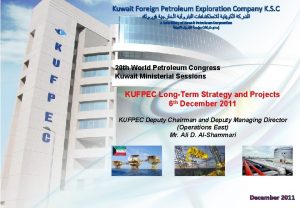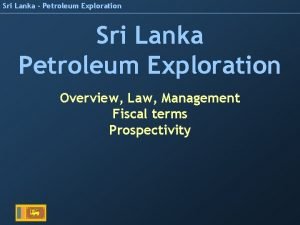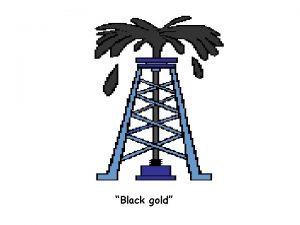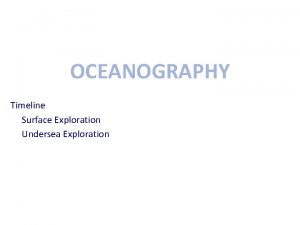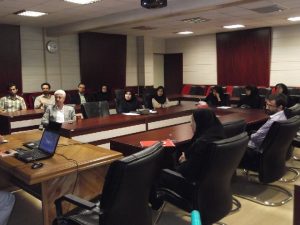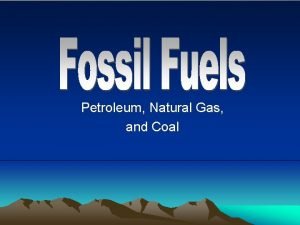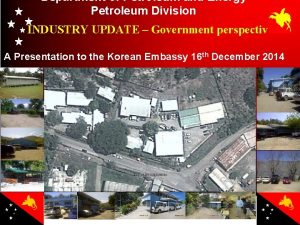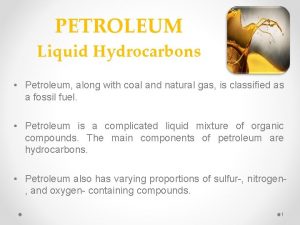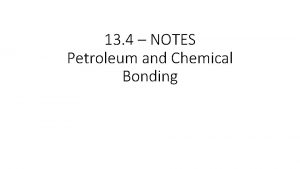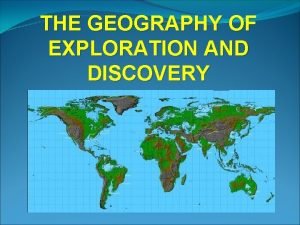Petroleum and its Exploration Petroleum The name petroleum



















- Slides: 19

Petroleum and it's Exploration

Petroleum The name petroleum covers both naturally occurring unprocessed crude oil and petroleum products that are made up of refined crude oil. A fossil fuel, petroleum is formed when large quantities of dead organisms that are buried underneath sedimentary.

Petroleum has mostly been recoverd by oil drilling. After recovering, it goes through refining and separating into large number of consumer products.

By Products of Petroleum Motor oil – used in moving parts/ mechanisms of vehicles. LPGs – these is a petroleum product mostly used in cooking equipments. Gasoline – it is the fuel used to vehicles. Kerosene – mostly used in lamps. Diesel Fuel – fuel used in diesel engines. Sulfur – contaminant of petroleum. Asphalt – solid form of petroluem.

1. by products

3 state of Petroleum Coal – is a hard, black colored rock-like substance. It is made up of carbon, hydrogen, oxygen, nitrogen and varying amount of sulfur Oil – is another fossil fuel. It was also formed more than 300 million years ago. Some scientist say that tiny diatoms are the source of oil. Diatoms are sea creatures that size of a pin head. Natural gas – is a naturally occurinf hydocarbon gas mixture consisting primarily of methane, but commonly including varying amounts of other higher alkanes, and sometimes a small percentage of carbon dioxide, nitrogen, and/or hydrogen sulfide.

2. states of petroleum

Geological Surveys Seismic surveying uses artificially generated shock waves to probe Earth's interior. Remote surveying similar to seismic surveying but this one uses a technique called active sensing whereas radio waves bounces off the surface to make a radar map. Gravitational Surveying petroleum deposits sometimes reveal thei existance through gravitational effents. It is possible becouse the density( hence, gravity) of the deposits differ from that of the surrouding rock. A device called Gravimeter senses the said differences.

3. surveying

Geological Surveys Chemical Surveys underground deposits may leach into nearby bodies of water. A chemical analysis of water and plants can reveal presence of deposits. Well-to-well Surveys sensors lowered into adjacent wells detect electrical resistance that helps geologists locate possible petroleum deposits.

Extraction of Petroleum Extraction of petroleum – is the process by which usable petroleum is extracted and removed from the Earth.

Extraction of Petroleum Locating the oil field - geologist use seismic surveying to search for geological structures that form oil reservoirs. - seismic methods are preferred to gravimeters and magnetometers are also sometimes used in the search for petroleum.

Extraction of Petroleum Drilling - the oil well is created by drilling a long hole into the earth witch an oil rig. A steel pipe (casing) is placed in the hole, to provide integrity to the newly drilled well bore.

Oil Extraction and Recovery Oil recovery refers to the processes by which crude oil is extracted from beneath the Earth's surface. Oil recovery can be categorized into three(3) phases: Primary Extraction - uses “reservoir drive”, natural pressure of the reservoir to push crude oil to the surface. Reservoir drive simply refers to the factors that move oil out of a well to the surface once drilling has occurred.

Oil Extraction and Recovery Secondary Extraction - injects pressure gas and water to drive the residual crude oil and gas remaining after the primary oil recovery phase to the surface wells. Tertiary Extraction - injects different materilas to improve the flow between oil, gas and rock, and to recover crude oil remaining after the primary and secondary oil recovery phases.

Tertiary Extraction Thermally Enhanced Recovery or TEOR Entails injecting steam into the formation, heat is applied to make the flow better. The heat form the steam makes the oil flow more easily, and the increased pressure forces it to the surface.

Tertiary Extraction Steam Injection -is the common form of TEOR, and is often done with a co-generation plant. In this type of co-generation plant, a gas turbine is used to generate electricity and the water heat is used to produce steam, which is then injected into the reservoir.

Tertiary Extraction Fire flooding – (in-situ burning) is another form of TEOR, but instead of steam, some of the oil is burned to heat the surrounding oil.

Tertiary Extraction Gas injection uses either misceble of immiscible gases. Miscible gasses dissolve CO 2, propane, methane or other gasses in the oil to lower its viscosity and increase flow. Chemicals called surfactants (detergent) are also used in tertiary Extraction. Chemical flooding involves mixing dense, water-soluble polymers with water and injecting the mixture into the field. Bacterial injection – oil-eating bacteria are also used
 Kuwait foreign petroleum exploration company k.s.c.
Kuwait foreign petroleum exploration company k.s.c. Name all the lines name all the segments name all the rays
Name all the lines name all the segments name all the rays Form of emigree
Form of emigree Its halloween its halloween the moon is full and bright
Its halloween its halloween the moon is full and bright When a train increases its velocity its momentum
When a train increases its velocity its momentum Its cloudy its sunny
Its cloudy its sunny If its square its a sonnet
If its square its a sonnet Its not easy but its worth it
Its not easy but its worth it Hình ảnh bộ gõ cơ thể búng tay
Hình ảnh bộ gõ cơ thể búng tay Slidetodoc
Slidetodoc Bổ thể
Bổ thể Tỉ lệ cơ thể trẻ em
Tỉ lệ cơ thể trẻ em Chó sói
Chó sói Tư thế worm breton
Tư thế worm breton Alleluia hat len nguoi oi
Alleluia hat len nguoi oi Môn thể thao bắt đầu bằng từ đua
Môn thể thao bắt đầu bằng từ đua Thế nào là hệ số cao nhất
Thế nào là hệ số cao nhất Các châu lục và đại dương trên thế giới
Các châu lục và đại dương trên thế giới Công thức tính thế năng
Công thức tính thế năng Trời xanh đây là của chúng ta thể thơ
Trời xanh đây là của chúng ta thể thơ
